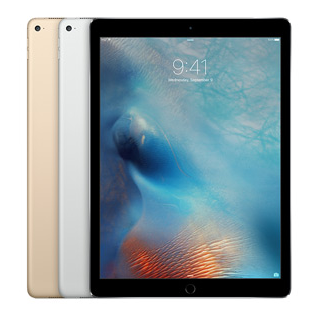Critical Kit: Apple iPad Pro

Some people love Apple’s products. Just as many hate them. But it’s pretty hard to argue that the 12.9-inch iPad Pro isn’t the best (certainly the most powerful) iPad you can buy. And no doubt many of our readers will have received or given one this Christmas.
The super-sized tablet has also received largely favourable reviews thanks in no small part to the larger Retina-spec screen, but also because of the Apple Pencil, which is Apple’s own take on the stylus.
iPad Pro

While I don’t currently own an iPad Pro (and am in two minds whether to forego my beloved iPad Mini and take the plunge, especially considering the high cost of the iPad Pro), I have spent some time using one at my local Apple store, and can honestly say that the enormous size, and the Pencil, do make iPad Pro a great device for two groups of people: those who consume a lot of content such as movies and games, and creative types who want to doodle, sketch, paint and do a little “serious” work.

Admittedly, iPad Pro may have some usability flaws – but most of these seem to revolve around iOS 9 not yet being sufficiently capable and optimised as a multi-tasking operating system, as well as the inelegance of the keyboard-case. In terms of the user interface, little has been done to take advantage of the larger screen real estate in some cases – the home screen of particular note, which has an enormous gap between icons.

Niggles aside, what Apple have done with the A9x CPU and graphics (a 12-core GPU from Imagination Technologies) is impressive. Indeed, few tablets match the power of the iPad Pro, and recent benchmarks indicate it beats even the 2015 MacBook and not all that far behind a Surface Pro 4. You can read more details about the iPad Pro hardware over at legendary site AnandTech who have carried out a thorough analysis.
But as many of you will rightly point out, the iPad Pro is still not a contender for a device that you can use as a true laptop replacement – yet. With time, I expect that iOS will add more features that elevate the iPad Pro and its successors to be a realistic laptop replacement, but in the meantime it’s certainly possible to carry out many ‘traditional’ PC-like tasks on the Pro.

Does it qualify as a piece of critical kit? For some people, yes. The Pencil, slightly silly name aside, is a very capable stylus and comes into its own in drawing and design apps such as those from Adobe. It has also been hailed as smoother, more responsive and precise than competitors’ offerings. It’s just a shame that you can’t magnetically attach the Pencil to the side of the iPad, like you can on a Surface.

Other criticisms of the Pencil also focus on the fact that it can’t be used while charging – indeed, it does look somewhat awkward when inserted into the iPad’s Lightning port. However, it takes less than 10 minutes to charge the Pencil from dead to 100%.

With a long slowdown in tablet sales in general in the past year or two, it remains to be seen whether the iPad Pro will boost iPad’s sales figures. But as a device that fills a niche and fulfils the use cases of many people (particularly those in design, and enterprise users who need a little more multi-tasking capabilities than an iPad Air), the Pro is a powerful tablet that will most likely serve their needs to a tee.
We’re always interested to hear your own suggestions for our Critical Kit series. While it’s a little hard to recommend kit that we don’t own or haven’t tried first-hand, tell us about your favourite tablet, smartphone, smart home accessory or any other gadget and the reasons why.
I would also be happy to recommend the Surface Pro 4 as the very best laptop/tablet Windows 10 device – perhaps Microsoft would be kind enough to furnish us with a review model to try out!



